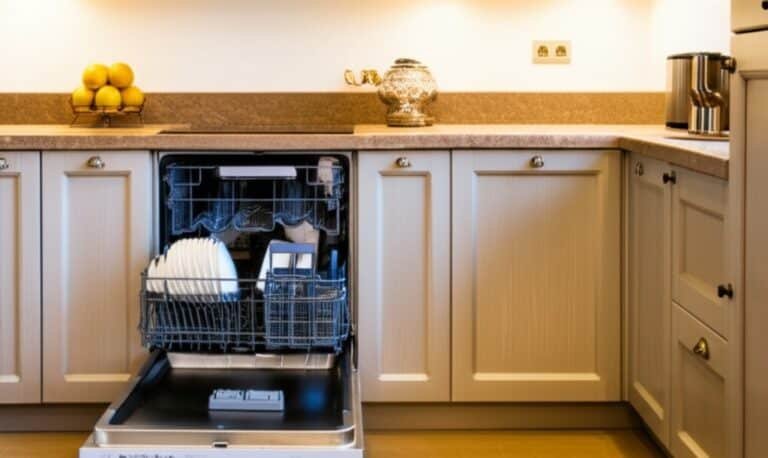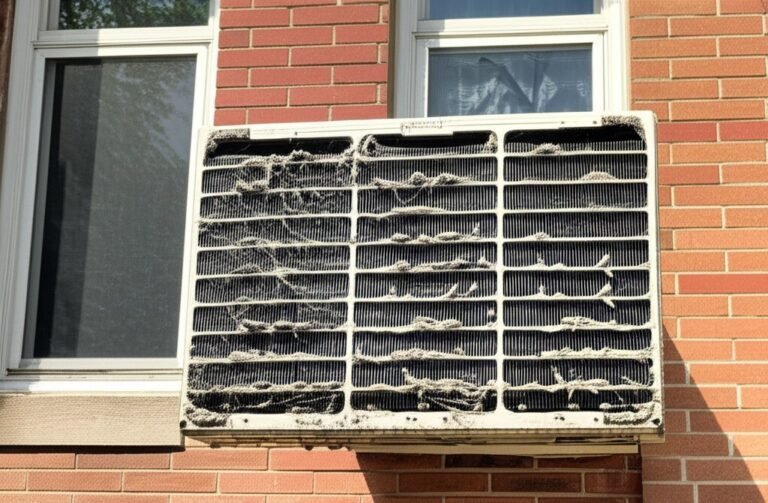It’s not just a time for the flowers to bloom but also the perfect season to Declutter Your Home for Spring, giving it a fresh, vibrant feel. If the thought of tackling this task feels daunting, worry not! I’ve got a step-by-step guide to make decluttering your space as breezy as a beautiful spring day. So, let’s roll up our sleeves and dive in!
Step 1: Set Your Goals
Starting with the end in mind transforms the process from a daunting task into an exciting journey towards your ideal living space. Think about what you want each room to look like and how you want to feel when you’re in them. Is your goal to create more space in your living room for family activities? Or perhaps you’re aiming to transform your home office into a productivity haven, free from distractions and unnecessary clutter.
Understanding your motivation is key. Whether it’s the desire for a serene environment where you can unwind and relax or the need for a functional space that supports your daily activities, your underlying reasons will guide your decluttering efforts and keep you motivated even when the going gets tough.
Setting goals that are specific and achievable is also about realism. Acknowledge the time and effort it will take. If you’re juggling a busy schedule, consider setting smaller, more focused goals. Maybe start with decluttering a single drawer or shelf a day. This approach keeps the task manageable and helps build momentum as you see your efforts paying off day by day.
Setting goals is also about envisioning a lifestyle. Decluttering is more than just getting rid of things; it’s about making room for what truly matters. By having clear goals, you not only transform your space but also take a step towards the life you want to lead—a life less cluttered with things and more filled with meaning and joy.
Step 2: Create a Plan
Start by taking a walk through your home, notebook in hand, and assess each room. Note the areas that feel most cluttered and those that simply need a quick tidy. This walkthrough gives you a bird’s eye view of the task ahead, helping you prioritize areas that will make the biggest impact on your daily life once decluttered.
Once you’ve identified the key areas to focus on, it’s time to set a timeline. Be realistic about what you can achieve in each decluttering session. For example, sorting through a wardrobe or a bookshelf might take a few hours, while organizing a junk drawer might be done in less than one. Scheduling these sessions into your calendar makes decluttering a part of your routine, rather than a sporadic activity that’s easy to postpone.
Consider the rhythm of your week when you plan your sessions. If your energy levels are higher in the morning, schedule decluttering sessions for then. If you’re someone who finds decluttering therapeutic, perhaps an evening session would be a relaxing way to end your day.
And about those breaks—don’t underestimate them. Decluttering can be physically and emotionally taxing. Finding mementos or deciding what to part with can stir up memories and emotions. Breaks are not just pauses but moments to reflect, recharge, and celebrate the progress you’ve made. They can be as simple as a cup of tea in your newly organized living space or a walk outside to clear your mind.
In your plan, also consider the disposal of items. Knowing in advance where to donate clothes, recycle electronics, or sell valuable items can make the process smoother and prevent piles of discarded items from cluttering up your space post-declutter.
Lastly, involve your household in the planning process. Decluttering can affect everyone in the space, and their buy-in can make the journey more enjoyable and less of a chore. Whether it’s assigning tasks or deciding together what stays and what goes, a team effort not only lightens the load but also brings a sense of shared accomplishment.

Step 3: Gather Your Supplies
Firstly, consider the types of containers you’ll need for different categories of items. For donations, sturdy bags or boxes that can be easily transported to a charity shop are ideal. For items you plan to sell, you might want clear bins or bags to keep them in good condition and separate from donations or trash. And for those things that have reached the end of their life, have recycling bins and trash bags ready to go.
But your toolkit needs more than just containers for sorting. Labeling your boxes and bags can save you a ton of time and confusion later on. Simple sticky labels or a marker pen will do the job. Mark each container with its destination—donate, sell, recycle, or trash—to keep your items organized as you declutter.
Cleaning supplies are the unsung heroes of the decluttering process. Once you clear a space, you’ll likely uncover dust and grime that’s been hiding. Have a basic cleaning kit ready with supplies like all-purpose cleaner, dusting cloths, and a vacuum cleaner. This allows you to clean as you go, ensuring that each area is not only decluttered but also sparkling clean.
Consider having some maintenance tools at hand. A screwdriver, for example, can help dismantle items that need to be broken down for disposal or recycling. Scissors or a box cutter can open packages or break down cardboard boxes for recycling.
For those precious items you decide to keep, having organizing aids like shelf dividers, storage bins, or drawer organizers ready can immediately help you put everything in its right place. Investing in these tools upfront means you won’t delay the final step of organizing your possessions.
Step 4: Sort Your Items
Sorting through your belongings requires a balance of practicality and sentimentality. While the one-year rule is a solid starting point, there are additional questions you can ask yourself to help with the decision-making process. Consider the item’s usefulness, emotional value, and whether it contributes positively to your living space. If an object hasn’t been used but holds significant sentimental value, think about ways to honor it—perhaps by repurposing, displaying, or storing it more effectively.
For items that are harder to let go of, try the “maybe box” technique. Place items you’re uncertain about in a designated box and set it aside for a set period, say a few months. If you don’t find yourself searching for any of those items during that time, it might be easier to part with them, knowing they’re not essential to your daily life.
When deciding what to keep, focus on the quality and condition of items. It’s better to have a few items that are well-loved and used regularly than numerous items that clutter your space and mind. This approach not only simplifies your life but also makes maintaining a tidy home much easier.
As you sort, create distinct piles for each category: keep, donate, sell, and toss. Be decisive and try not to second-guess your initial instincts. The goal is to reduce the volume of possessions that have accumulated over time, freeing up physical and mental space.
For items you choose to donate or sell, consider their condition. Only donate items that are clean and in good working order. Selling items can also be a motivating factor, as it turns your clutter into cash. There are numerous online platforms and local community boards where you can sell belongings that may still have value to others.
For items that are no longer useful, broken, or worn out, responsibly dispose of them. Recycle where possible, and consider the most environmentally friendly options for disposal.

Step 5: Organize What Stays
After navigating the challenging waters of sorting through your belongings, you’ve arrived at the rewarding shores of organization—where every item you’ve chosen to keep finds its rightful place in your home. This step is about creating a harmonious space that supports your daily life, ensuring that your living environment is both functional and aesthetically pleasing.
The key to effective organization is to approach it with intention. Begin by considering the flow of your home and the way you use each space. Items should be stored where they are most frequently used, making daily tasks easier and more efficient. For example, keep cooking utensils near the stove and store bed linens close to bedrooms or bathrooms.
Utilizing storage solutions effectively can transform your space. Shelves, for instance, can be adjusted to accommodate items of varying sizes, making them a versatile option for many rooms. Boxes, baskets, and bins can conceal items that might not be as visually appealing, keeping your space tidy and clutter-free. Transparent storage solutions are excellent for items you use regularly, allowing you to see the contents at a glance without needing to open and rummage through them.
Dividers and drawer organizers are unsung heroes in keeping small items in check. They can turn a chaotic drawer into a neatly organized storage area where everything is easily accessible. This is especially useful in high-use areas like kitchens and bathrooms, where searching for small items can be frustrating.
When organizing, it’s also important to consider vertical space. Wall-mounted shelves and hooks can provide additional storage without taking up floor space, making them perfect for smaller homes or apartments. This approach not only helps keep your floors clear but also draws the eye upward, creating a sense of spaciousness.
Labeling can further enhance your organization efforts. By clearly marking the contents of boxes, bins, and shelves, you ensure that everyone in your household knows where to find and return items. This simple step can save time and prevent future clutter from accumulating.
As you organize, be mindful of maintaining a balance between functionality and aesthetics. Your home should reflect your personal style and feel welcoming. Organizing isn’t just about storage—it’s about creating a space that brings joy and calm into your life.
In this phase of decluttering, remember that organization is an ongoing process. As your life changes, so will your organizational needs. Periodically reassessing how your space is organized can ensure it continues to meet your needs and remains a place where you love to spend time.
Step 6: Deal With the Discards
Taking action with the items you’ve chosen to part with is a critical step in the decluttering process. It’s here that your efforts to clear space in your home transition into tangible results, not just for you, but potentially for others and the environment as well. This phase is about closing the loop responsibly, ensuring that your discarded items find their next purpose or are disposed of in an environmentally friendly way.
When it comes to donations, consider local charities, shelters, and community centers that could benefit from the items you no longer need. Many organizations welcome gently used clothing, furniture, and household goods to support those in need. Before dropping off your items, it’s a good practice to check with the organization regarding their current needs and donation guidelines to ensure your contributions can be used effectively.
Selling items is another excellent way to deal with discards, offering a win-win situation by providing you with a bit of extra income while giving your items a second life with someone who needs or wants them. Online marketplaces, local classifieds, and garage sales are popular options for selling items. When selling online, clear photographs and detailed descriptions can help attract buyers and ensure a smooth transaction.
Proper disposal and recycling of items that can’t be donated or sold is crucial for minimizing your environmental impact. Many communities offer recycling programs for a wide range of materials, including electronics, which can be harmful if not disposed of correctly. For items that aren’t recyclable, consider if they can be repurposed or upcycled into something new. This creative approach not only reduces waste but can also add a unique touch to your home decor.
It’s also important to recognize that dealing with discards can sometimes be emotionally challenging, especially when parting with items that hold sentimental value. In these cases, acknowledging the memories associated with the items and allowing yourself to let go can be part of the decluttering process. Remember, the goal is to make room for new experiences and items that fit your current lifestyle and bring you joy.
Step 7: Maintain the Clutter-Free Space
Establishing regular decluttering sessions can be incredibly effective. Set aside time each week or month to go through different areas of your home. These mini decluttering sessions can help you stay on top of any new items that have come into your home and reassess what you truly use and need. This proactive approach keeps small accumulations of clutter from growing into overwhelming mountains.
Integrating decluttering into your daily routines can also make maintenance feel less like a chore. For instance, make it a habit to evaluate items before they come into your home. Ask yourself if they serve a purpose or bring you joy. This mindful approach to acquisitions can significantly reduce the influx of unnecessary items.
Another strategy is the “one in, one out” rule, where for every new item you bring into your home, you remove an existing one. This practice encourages you to be more deliberate about your possessions and helps maintain the balance of items in your home.
Involving family members in the maintenance process is essential. Clutter-free living is a team effort, and everyone in the household can contribute. Hold family meetings to discuss goals and expectations, and assign specific tasks or areas of responsibility to each person. Creating a shared vision for a clutter-free home can foster a sense of accountability and teamwork.
Celebrating successes and recognizing efforts to keep the home clutter-free can also motivate everyone to maintain the space. Whether it’s a family outing or a simple acknowledgment of the effort put in, appreciation can go a long way in building and sustaining decluttering habits.
Education plays a role as well. Teach family members about the benefits of living with less clutter, such as reduced stress, more freedom, and increased happiness. Understanding the “why” behind the efforts can be a powerful motivator.

Declutter Your Home for Spring With us!
Decluttering your home for spring is indeed a rewarding process that breathes new life into your living space, making it more inviting and functional. It’s a time to refresh and reset, preparing your home for the year ahead. As you work through the steps of decluttering, organizing, and maintaining your space, you’ll likely find that the benefits extend far beyond just a tidy home. A decluttered environment can lead to a clearer mind, reduced stress, and an overall sense of well-being. Embrace this journey as an opportunity to reassess what’s important to you and make room for new experiences and memories to flourish in your home.
However, the journey doesn’t end once your space is decluttered. The true challenge lies in maintaining this newfound clarity and organization. It’s about adopting a mindset of mindful consumption, where every item in your home serves a purpose or brings you joy. Encourage and engage your family members in this lifestyle change, making clutter-free living a collective goal. Celebrate your successes together, and remember that maintaining a decluttered home is a continuous process that requires patience, commitment, and flexibility.
For those who find themselves needing a helping hand to keep their homes in the pristine condition they’ve worked so hard to achieve, Toronto Shine Cleaning offers a variety of services to support your efforts. From regular cleaning services to deep cleans, our professional team can help ensure your home remains a clutter-free sanctuary. Let us take care of the cleaning details so you can enjoy your beautifully organized space without the added stress.



















